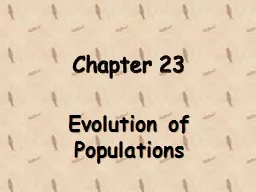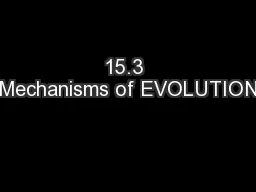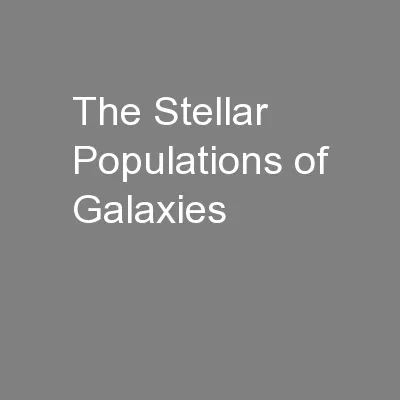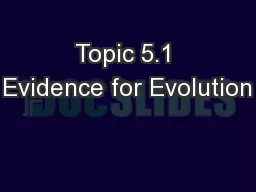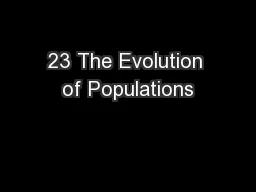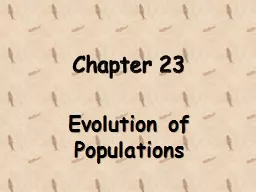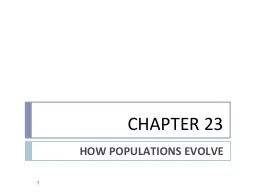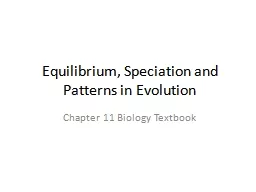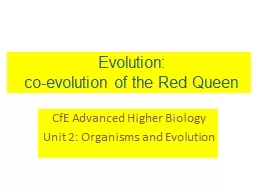PPT-Chapter 23 Evolution of Populations
Author : stefany-barnette | Published Date : 2018-06-29
Question Is the unit of evolution the individual or the population Answer while evolution effects individuals it can only be tracked through time by looking
Presentation Embed Code
Download Presentation
Download Presentation The PPT/PDF document "Chapter 23 Evolution of Populations" is the property of its rightful owner. Permission is granted to download and print the materials on this website for personal, non-commercial use only, and to display it on your personal computer provided you do not modify the materials and that you retain all copyright notices contained in the materials. By downloading content from our website, you accept the terms of this agreement.
Chapter 23 Evolution of Populations: Transcript
Download Rules Of Document
"Chapter 23 Evolution of Populations"The content belongs to its owner. You may download and print it for personal use, without modification, and keep all copyright notices. By downloading, you agree to these terms.
Related Documents

